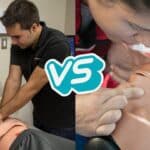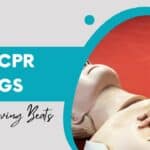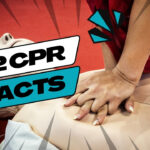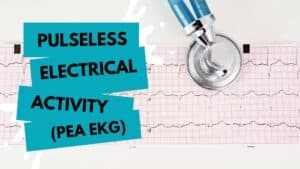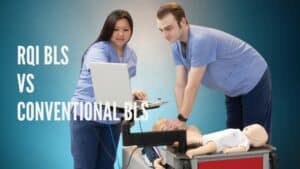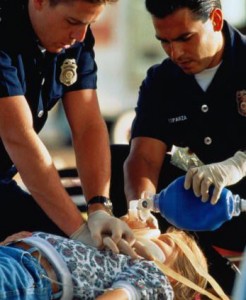
It’s time to take a CPR class and you start searching the Internet. You know of two types of certifications: American Heart Association and American Red Cross, but which one should you take? What’s the difference?
The AHA and the ARC are the most well know CPR certifying agencies out there, but they are not the same. Although they are both based off the 2005 American Heart Association guidelines, the certifications are not identical. Below we will discuss the differences between both of them.
What Is AHA CPR Certification?
American Heart Association – The AHA CPR classes are broken down into two optons: BLS for the Healthcare Professional, Heartsaver AED, and Heartsaver CPR. If you are in the medical field, BLS is the only class for you. It is the most widely accepted course for hospitals and dentists. The Heartsaver CPR classes are for laypeople, teachers, physical therapists, babysitters, etc. AHA certifications are good for 2 years and a book must be purchased with each class.
-
Basic Life Support (BLS) for the Healthcare Provider
BLS for the healthcare provider is designed any person that works in the healthcare industry. For example, emergency medical technicians (EMTs), pharmacists, registered nurses (RNs) and other medical personnel. It focuses on the following topics:
- How to administer adult, child and infant CPR
- How to assist conscious and unconscious choking victims
- The use of an automated external defibrillator (AED) and special considerations
- The importance of breathing barriers and bag valve masks
- How to provide two-rescuer CPR
Furthermore, BLS for the healthcare provider explores cardiopulmonary emergencies and special resuscitation situations, ensuring medical personnel know how to respond in life-threatening scenarios.
-
Heartsaver CPR AED
Heartsaver CPR AED offers an ideal course for layperson of all ages and skill levels. Heartsaver CPR AED teaches students how to provide adult, child and infant CPR and how to use an AED effectively while waiting for First Responders and EMS to arrive to the scene.
If you are in the medical field, BLS for the healthcare provider is the only class for you. It is the most widely accepted course for hospitals and dentists. Meanwhile, the Heartsaver CPR AED classes are for laypeople, teachers, physical therapists, babysitters and many others.
Moreover, AHA certifications are good for two years, and a book must be purchased with each class.
What Is ARC CPR Certification?
ARC CPR consists of three courses:
-
CPR for the Professional Rescuer
ARC CPR for the professional rescuer teaches students how to respond to breathing and cardiac emergencies in adults, children and infants.
During a CPR for the professional rescuer class, students will learn about one- and two-rescuer CPR, how to use an AED and how to support conscious and unconscious choking victims. The class also highlights how to give ventilations and perform a primary assessment in an emergency.
-
CPR for Schools and the Community
ARC CPR for schools and the community consists of free health and safety training for students.
Students can participate in a CPR class that teaches them how to administer hands-only CPR. After a student successfully completes this class, he or she will receive a CPR course completion card.
Also, the ARC offers a first aid and CPR class for students. This class teaches students about citizen CPR and how to administer care and check in on an injured or ill person.
-
CPR for the Workplace
CPR for the workplace enables small or large groups of workers to receive CPR training. The class frequently is provided at an office or work location and ensures many employees can learn CPR at the same time.
In most instances, CPR for the workplace provides a flexible training option for organizations of all sizes. It allows employers to educate their workers about CPR, and as such, create safer, more productive work environments.
CPR for the professional rescuer is comparable to the AHA BLS courses, but is not accepted as widely. It is a two-year certification class.
Comparatively, the other two courses are equivalent to the Heartsaver courses, but the certifications will remain valid for one year. Books must be purchased for ARC CPR classes as well.
So there it is: AHA vs. ARC certification. Which certification option is the victor? My vote goes to the AHA.
It also is important to remember that there are several AHA and ARC CPR certification alternatives. In fact, many CPR certification programs are equivalent to AHA and ARC certification.
For example, the American Safety and Health Institute (ASHI) CPR certification program is approved by the U.S. Coast Guard, U.S. Department of Defense and Homeland Security and many world-renowned organizations. It usually is an affordable alternative to AHA and ARC CPR classes.
An individual should review a variety of CPR certification classes. By doing so, a person can select the right CPR certification course based on his or her individual needs.

